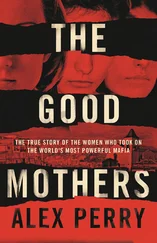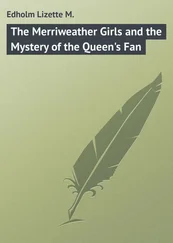Marek Edelman - The Ghetto Fights
Здесь есть возможность читать онлайн «Marek Edelman - The Ghetto Fights» весь текст электронной книги совершенно бесплатно (целиком полную версию без сокращений). В некоторых случаях можно слушать аудио, скачать через торрент в формате fb2 и присутствует краткое содержание. Жанр: Биографии и Мемуары, на английском языке. Описание произведения, (предисловие) а так же отзывы посетителей доступны на портале библиотеки ЛибКат.
- Название:The Ghetto Fights
- Автор:
- Жанр:
- Год:неизвестен
- ISBN:нет данных
- Рейтинг книги:3 / 5. Голосов: 1
-
Избранное:Добавить в избранное
- Отзывы:
-
Ваша оценка:
- 60
- 1
- 2
- 3
- 4
- 5
The Ghetto Fights: краткое содержание, описание и аннотация
Предлагаем к чтению аннотацию, описание, краткое содержание или предисловие (зависит от того, что написал сам автор книги «The Ghetto Fights»). Если вы не нашли необходимую информацию о книге — напишите в комментариях, мы постараемся отыскать её.
The Ghetto Fights — читать онлайн бесплатно полную книгу (весь текст) целиком
Ниже представлен текст книги, разбитый по страницам. Система сохранения места последней прочитанной страницы, позволяет с удобством читать онлайн бесплатно книгу «The Ghetto Fights», без необходимости каждый раз заново искать на чём Вы остановились. Поставьте закладку, и сможете в любой момент перейти на страницу, на которой закончили чтение.
Интервал:
Закладка:
Marek Edelman
The Ghetto Fights
I am not acquainted with the young author of this booklet, one of the leaders of the Jewish Uprising. He brought me a typewritten copy, and I read it all at once, unable to interrupt my reading for a single moment.
... "I am not a writer, " he said. "This has no literary value. "
However, this non-literary narrative achieves that which not all masterpieces can achieve. For it gives in serious, purposeful, reticent words a record, simple and unostentatious, of a common martyrdom, of its entire involved course. It is also an authentic document about perseverance and moral strength kept intact during the greatest tragedy in the history of mankind.
Zofia Nalkowska, LODZ, November 1945Dedicated to the Memory of Abrasha Blum
When the Germans occupied Warsaw in 1939, they found the Jewish political and socialworld in a state of complete chaos and disintegration. Almost all the leading personalities had left Warsaw on September 7th. The 300,000 Jews there experienced a deeper feeling of loneliness and helplessness than the others.
In such conditions it was easy for the Germans to dominate the population from the very beginning by breaking their spirit through persecutions and by evoking a state of passive submission in their midst. The experienced and devilishly refined German propaganda agencies worked ceaselessly to achieve these aims, spreading incredible--for those days--rumours which further increased the panic and derangement in Jewish life. Then, after a short period of time, the maltreatment of Jews passed the stage of an occasional punch on the nose, sadistic extractions of Jews from their homes, and chaotic nabbing of Jews in the streets for aimless work. The persecutions now became definite and systematic.
As early as November 1939, the first "exterminating" decrees were made public: the establishment of "educational" camps for the Jewish population as a whole, and the expropriation of all Jewish assets in excess of 2,000 zloty per family. Later, one after another, a multitude of prohibitive rules and ordinances appeared. Jews were forbidden to work in key industries, in government institutions, to bake bread, to earn more than 500 zloty a month (and the price of bread rose, at times, to as high as 40 zloty a pound), to buy from or sell to "Aryans", to seek comfort at "Aryan" doctors' offices, to doctor "Aryan" sick, to ride on trains and trolley-cars, to leave the city limits without special permits, to possess gold or jewelry, etc. After November 12th, 1939, every Jew twelve years of age or older was compelled to wear on his right arm a white arm-band with the blue Star of David printed on it (in certain cities, e.g. Lodz and Wloclawek, yellow signs on the back and chest).
The Jews--beaten, stepped upon, slaughtered without the slightest cause--lived in constant fear. There was only one punishment for failure to obey regulations--death--while careful obedience to the rules did not protect against a thousand more and more fantastic degradations, more and more acute persecutions, recurrent acts of terror, more far-reaching regulations. To top it all, the unwritten law of collective responsibility was being universally applied against the Jews. Thus, in the first days of November 1939, 53 male inhabitants of the 9 Nalewki Street apartment house were summarily shot for the beating of a Polish policeman by one of the tenants. This occurrence, the first case of mass punishment, intensified the feeling of panic amongst the Warsaw Jews. Their fear of the Germans now took on unequalled forms.
In this atmosphere of terror and fear, and under conditions cardinally changed, the Bund resumed--or, to be more specific continued--its political and social activities. Despite everything that was happening, there were among us, it seemed, people ready to attempt further work. First, psychological difficulties had to be overcome. For instance, a strongly depressing handicap was the feeling that one could perish instantly not as a result of any particular activities, but as a beaten and humiliated--not human being--but Jew. This conviction that one was never treated as an individual human being caused a lack of self-confidence and stunted the desire to work. These factors will perhaps best explain why our activities in the first period after the fall of Warsaw were mainly of a charitable nature, and why the first instinctive acts of armed resistance against the occupying forces occurred comparatively late and, in the beginning, in such insignificant forms. To overcome our own terrifying apathy, to force ourselves to the smallest spark of activity, to fight against our own acceptance of the generally prevailing feeling of panic--even these small tasks required truly gigantic efforts on our part.
Even during the darkest moments, the Bund did not suspend its activities for the shortest time. When the Party's Central Committee was forced to leave the city in September 1939, it had placed the responsibility of continuing the political activities of the Bund in the hands of Abrasha Blum. He, together with Szmul Zygielbojm and in cooperation with the efforts of Warsaw's mayor, Starzynski, organized Jewish detachments which took an active part in the defence of the capitai. Almost the entire editorial staff of the Folkszajtung ("The People's Gazette"--the party daily) had left. However, the publication of the Folkszajtung was continued. During the siege period, it appeared regularly, edited by comrades Abrasha Blum, Klog, Klin and others.
Public kitchens and canteens originated during the siege continued their activities after the seizure of the city. Almost all Party and Trade Union members received financial help. Immediately following the arrival of the Germans, the new Central Bureau of the Party was organized (A. Blum, L. Klog, Mrs. S. Nowogrodzka, B. Goldsztejn, S. Zygielbojm, later A. Sznajdmil ("Berek") and M. Orzech).
In January 1940, after the first radio transmitting station of the Polish Underground had been found by the Germans, a new wave of mass terror commenced. During a single night the Germans arrested and murdered over 300 people comprising social leaders, intelligentsia and professionals. This was not all. The so-called "Seuchensperrgebiet" (area threatened by typhus) was established, and Jews were forbidden to live outside of this designated area. Furthermore, the Jews were being forced to work for both German and Polish employers, and were generally looked upon as a source of cheap labour. This did not suffice, either. The world was to be shown that the Jews were hated not only by the Germans.
Thus, during the Easter Holidays of 1940, pogroms lasting several days were instigated. The German Air Corps engaged Polish hoodlums for 4 zloty per "working day". The first three days the hooligans raged unopposed. On the fourth day the Bund militia carried out revenge actions. Four major street battles resulted in the following localities: Solna Street--Mirowski Market Square, Krochmalna Street--Grzybowski Square, Karmelicka Street-- Nowolipie Street, and Niska Street--Zamenhofa Street. Comrade, Bernard Goldsztejn commanded all of these battles from his hide-out.
The fact that none of the other active political parties took part in this action is significant as an example of the utter misconception of existing conditions common to Jewish groups at the time. All other groups even opposed our action. It was, however, our determined stand that momentarily checked the Germans' activities and went on record as the first Jewish act of resistance.
It was imperative that the public understand the significance of the events. It was imperative that all the beaten, maltreated people be told and shown that despite all we were still able to raise our heads. This was the immediate purpose of the first issue of The Bulletin which appeared for May Day, published on the battered Skif mimeograph machine which had been found by chance in the Public School at 29 Karmelicka Street. The editorial committee included Abrasha Blum, Adam Sznajdmil and Bernard Goldsztein. The entire issue was dedicated to an analysis of the Easter disturbances. It met, however, with indifference on the part of the public.
Читать дальшеИнтервал:
Закладка:
Похожие книги на «The Ghetto Fights»
Представляем Вашему вниманию похожие книги на «The Ghetto Fights» списком для выбора. Мы отобрали схожую по названию и смыслу литературу в надежде предоставить читателям больше вариантов отыскать новые, интересные, ещё непрочитанные произведения.
Обсуждение, отзывы о книге «The Ghetto Fights» и просто собственные мнения читателей. Оставьте ваши комментарии, напишите, что Вы думаете о произведении, его смысле или главных героях. Укажите что конкретно понравилось, а что нет, и почему Вы так считаете.











